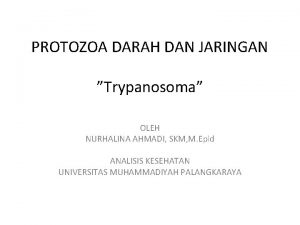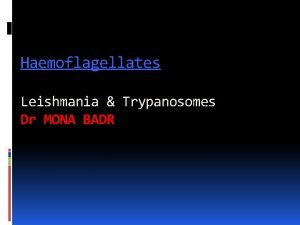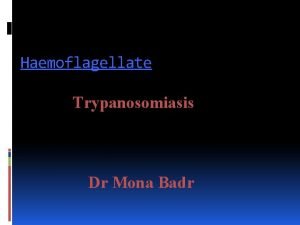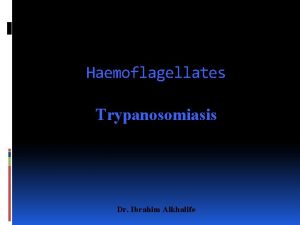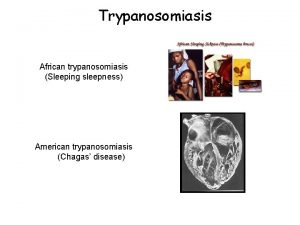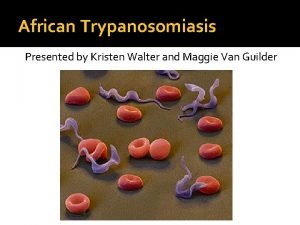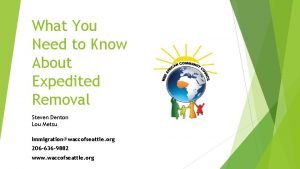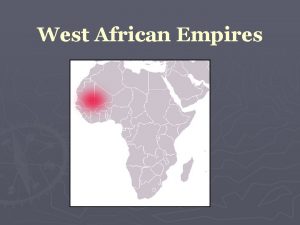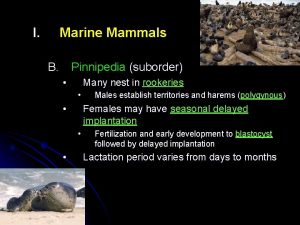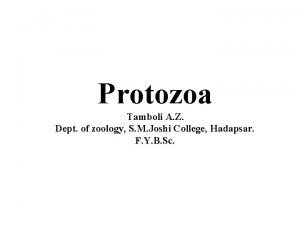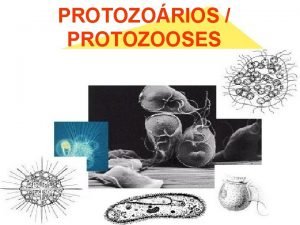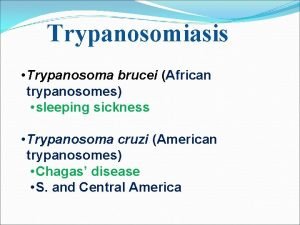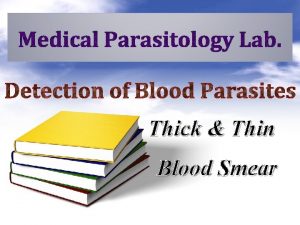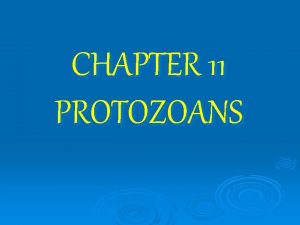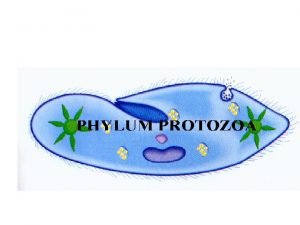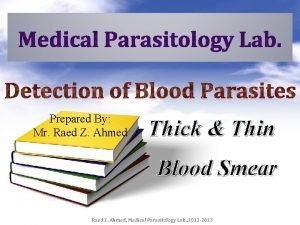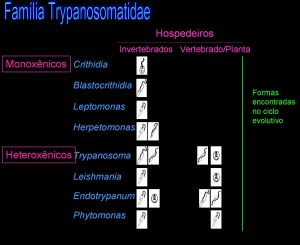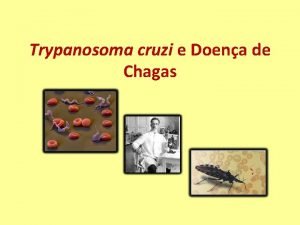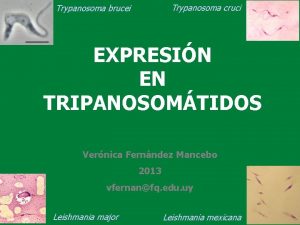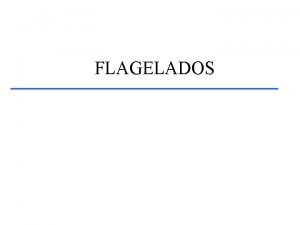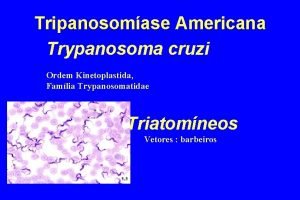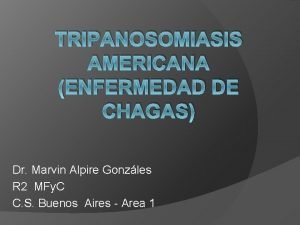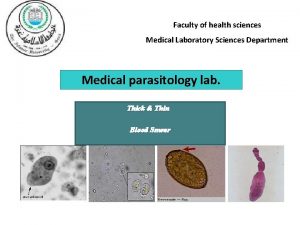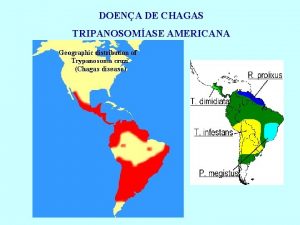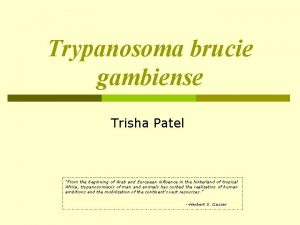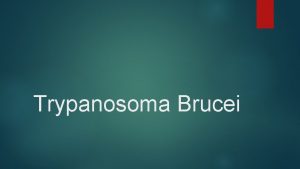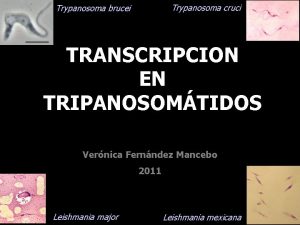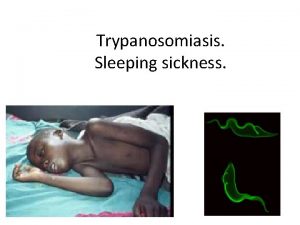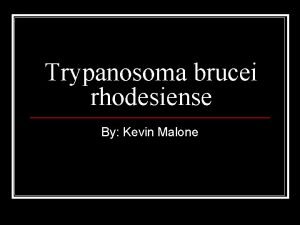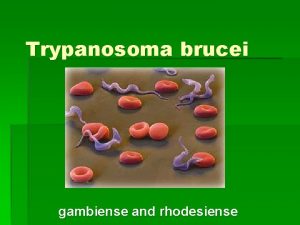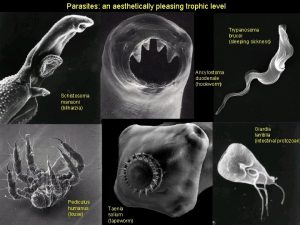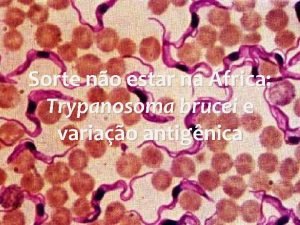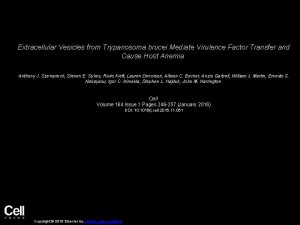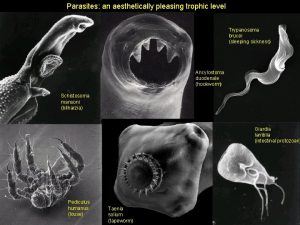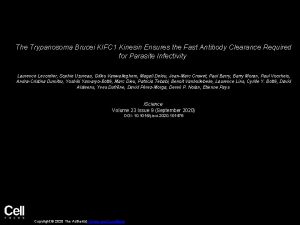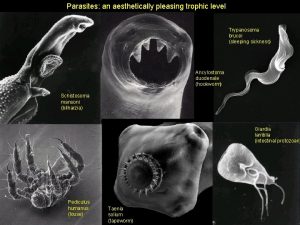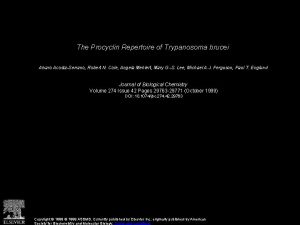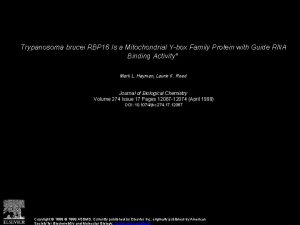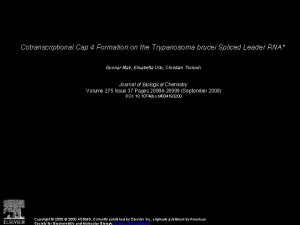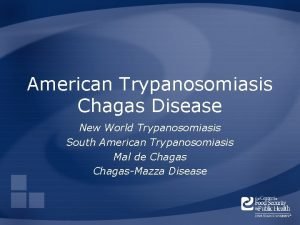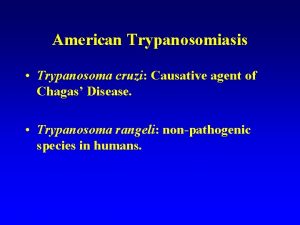African trypanosomiasis Trypanosoma brucei African trypanosomiasis Distribution West

African trypanosomiasis Trypanosoma brucei

African trypanosomiasis - Distribution West African = Trypanosoma gambiense East African = Trypanosoma rhodesiense

African trypanosomiasis Resistant and susceptible cattle N’dama Zebu

African trypanosomiasis The tsetse fly

African trypanosomiasis Life cycle

African trypanosomiasis Antigenic variation



Trypomastigote

African trypanosomiasis Reservoir hosts gazelle gerenuk impala oryx




African trypanosomiasis Disease


African trypanosomiasis Diagnosis


Syndrom: Trypanosomal chancre

Winterbottoms, s sign





African trypanosomiasis Treatment Suramin - Pentamidine (early) Melarsoprol (late) DFMO Aventis Pharm & WHO


African trypanosomiasis Prevention and Control

Chagas' disease Trypanosoma cruzi (blood smear)

Chagas' disease Epidemiology Occurrence: endemic in rural Mexico, Central and South America; occurs in southern US, but also seen in Utah and California Frequency/distribution: estimated 16 -18 million people in endemic areas are infected (not including Mexico and Nicaragua)

Chagas' disease

Chagas' disease Epidemiology - vector distribution

Chagas' disease Epidemiology Reservoir: endemic in rural Mexico, Central and South America; occurs in southern US, but also seen in Utah and California

Chagas' disease Epidemiology - case distribution (humans)

Chagas' disease Epidemiology Vector: Reduviid bugs (cone-nosed or kissing bugs) - blood sucking reduviids l Triatoma infestans, T. braziliensis, T. dimidiata, T. sordida, Panstrongylus megistus, Rhodnius prolixus) are primary vectors l species that colonize poorer quality rural housing

Chagas' disease Triatoma infestans

Chagas' disease Vector: triatome

Chagas' disease Epidemiology Mode of transmission: l contamination of wound site, conjunctiva, or mucosa by infected feces of insect l blood transfusion l ingestion of infected triatomes in some animals (sylvatic cycle)

Chagas' disease Epidemiology Life cycle: l typomastigotes - infective form, in blood stream of vertebrate host and in insect l vector becomes infective from 10 -30 days after biting host, infected for life (up to 2 years) l epimastigotes - in insect l amastigotes - in tissue



Chagas' disease Clinical features Incubation period: 5 -14 days; up to 40 by transfusion Symptoms l Acute l variable fever, malaise, lymphadenopathy, hepatomegaly l chagoma: inflammatory response at site of infection; may last a couple of months l Romaña sign: bipalpebral edema (unilateral)

Chagas' disease Clinical features Symptoms l Chronic - irreversible sequelae including: l cardiovascular: cardiomyopathy, arrythmias, conduction disturbances l gastrointestinal: megaesophagus, megacolon l meningoencephalitis in AIDS patients



Chagas' disease Diagnosis Demonstration of the agent is the diagnostic procedure in acute Chagas'' disease; almost always yields positive results l Microscopic examination l a) of fresh anticoagulated blood, or its buffy coat, for motile parasites l b) of thin and thick blood smears stained with Giemsa, for visualization of parasites.

Chagas' disease Diagnosis Demonstration of the causal agent l Isolation l a) inoculation into mice l b) culture in specialized media (e. g. , NNN, LIT) l c) xenodiagnosis, where uninfected reduviid bugs are fed on the patient's blood, and their gut contents examined for parasites 4 weeks later.

Chagas' disease Diagnosis Serology - antibody detection or antigen detection useful in screening and for chronic infections l IFA l EIA l PCR

Chagas' disease Treatment nifurtimox - for acute cases benznidazole - also effective in acute cases

Chagas' disease Prevention and control Education Vector and reservoir control Screeing of blood and organ donors
- Slides: 48
